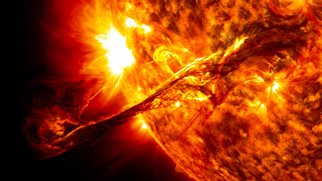Playing is Learning
How Our Sun Came to be
October 11th, 2016
| Ads | ||
|
Play the Challenge
|
||
|
A New Word is Coined A new Character is revealed A new Game is Afoot |
An Edutainment Adventure Based on Three Rounds of Investigations
|
|
|
Welcome to the World of PROFESsee™by seeCOSM™ PROFESsee™ is my title. I am the perpetual learner, in pursuit of knowledge, wisdom and truth. I derived my name from professor |
 |
|
|
We know the sun from different perspectives, depending on how it affects us. In Africa, it is known for droughts and famine, a punishing orb of fire that is as punctual as clockwork. In Monaco, the sun means beach time, but don’t forget to protect your body with sunscreen. In Finland, they have the midnight sun in summer which is real fun. However, did you ever wonder how the sun came to be? Read on The sun is the brightest and biggest object in our solar system. It is spherical and made up of hot plasma and interweaves of magnetic fields. The sun has a diameter of 865,374 miles which translate to about 1,392,684 kilometers, which is about 109 times the earth’s diameter. It is also 333,000 times heavier than the earth standing at 1.989 x 1030 kilograms. The sun is mostly made up of hydrogen and a small portion of Helium with the remaining 1.69% being iron, neon, carbon and oxygen among other heavy elements. How the sun came to be can be traced back to 4.6 billion years ago through a gravitational collapse of a molecular cloud’s region. It is believed that most of the matter that is now the sun, gathered in the center of the cloud while the rest dispersed into an orbiting disc that later formed the solar system. With time the central part became dense and hot that there was a thermonuclear fusion in the core. Almost all the other stars are also believed to have been formed this way. Despite being white the sun is referred to as a yellow dwarf because of its yellow color as viewed from the earth due to scattering of blue light by the atmosphere. The sun is believed to be brighter than 85% of stars in the Milky Way galaxy. And has a surface temperature of about 5505 oC or 5778 K. Can you Assemble the Sun's lifecycle? Image courtesy of: http://en.wikipedia.org/wiki/Sun |
||
Latest News / Events
E-mail [email protected]
The Professee™ Newsletter Beta
http://www.seecosm.com/
http://www.seecosm.com/

